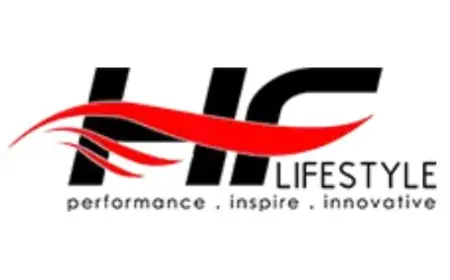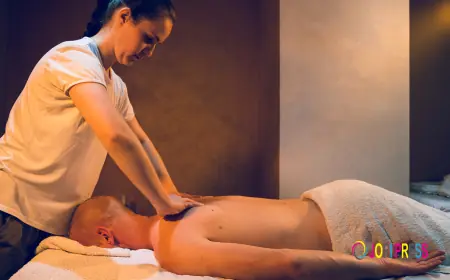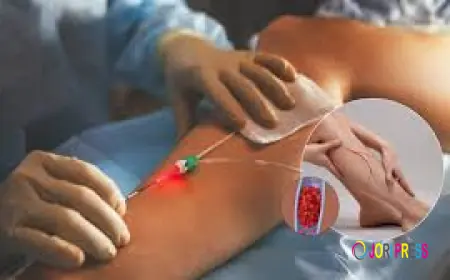Crafting Your Ideal Profile: A Guide to Rhinoplasty Surgery in Riyadh
Within this thriving medical landscape, Rhinoplasty Surgery in Riyadh, Jeddah and Saudi Arabia stands out as one of the most frequently sought-after procedures.

The nose, being the central feature of the face, profoundly influences overall facial balance and harmony. For many, its shape, size, or proportion can be a source of self-consciousness, impacting their confidence and how they perceive themselves. Beyond aesthetics, nasal structure can also affect vital functions like breathing. Rhinoplasty, commonly known as a "nose job," is a sophisticated surgical procedure designed to reshape the nose, correcting imperfections, improving symmetry, and achieving a more aesthetically pleasing or functionally sound profile. It’s a procedure that combines intricate surgical skill with a keen artistic eye, aiming for natural-looking results that complement an individual's unique facial features.
Rhinoplasty Surgery: A Growing Demand in Saudi Arabia
Saudi Arabia has emerged as a prominent destination for aesthetic procedures, with a significant demand for high-quality plastic surgery services. Within this thriving medical landscape, Rhinoplasty Surgery in Riyadh, Jeddah and Saudi Arabia (عملية تجميل الأنف في الرياض) stands out as one of the most frequently sought-after procedures. Patients in these vibrant cities are increasingly seeking refined, natural outcomes that enhance their facial harmony while respecting their ethnic characteristics. This growing demand reflects a sophisticated understanding of aesthetic possibilities and a commitment to investing in highly skilled surgeons and state-of-the-art facilities, ensuring that residents have access to world-class nasal reshaping solutions.
Understanding Rhinoplasty: More Than Just Reshaping
Rhinoplasty is a complex surgical procedure that can alter the size, shape, and proportions of the nose, or correct structural problems that hinder breathing. It involves carefully reshaping the bone and cartilage that form the nose.
-
Aesthetic Goals: Patients often seek rhinoplasty to address concerns such as a prominent hump on the bridge, a wide or bulbous tip, asymmetry, nostrils that are too wide or flared, or a nose that is out of proportion with other facial features.
-
Functional Improvements: Beyond aesthetics, rhinoplasty can also correct structural defects, such as a deviated septum, which can significantly improve breathing difficulties and overall nasal function.
-
Personalized Approach: There is no single "ideal" nose. A successful rhinoplasty emphasizes creating a nose that looks natural, balances with the patient's other facial features, and meets their personal aesthetic goals.
-
Surgical Techniques: The two primary approaches are "open" rhinoplasty, where a small incision is made across the columella (the strip of skin between the nostrils), allowing the surgeon full visibility, and "closed" rhinoplasty, where all incisions are made inside the nostrils, leaving no external scars. The choice depends on the complexity of the case.
This intricate blend of artistry and precision makes rhinoplasty one of the most challenging yet rewarding plastic surgery procedures.
Who is an Ideal Candidate for Rhinoplasty Surgery?
Determining suitability for rhinoplasty involves several considerations, encompassing both physical maturity and emotional readiness.
-
Physical Maturity: The nose must have reached its full growth. For girls, this is typically around 14-15 years of age, and for boys, slightly later. Surgery before this point can lead to unpredictable results as the nose continues to develop.
-
Good General Health: Candidates should be in good overall physical health, without any medical conditions that could impair healing or increase surgical risks.
-
Realistic Expectations: This is crucial. Ideal candidates have clear, realistic goals and understand that rhinoplasty aims for improvement and harmony, not absolute perfection. They should have a clear understanding of what the surgery can and cannot achieve.
-
Non-Smoker: Smoking can significantly impede the healing process and increase the risk of complications. Surgeons typically require patients to stop smoking well in advance of surgery.
-
Emotional Stability: Patients should be emotionally mature and undergoing surgery for themselves, not to please others. A stable psychological state is important for coping with the recovery process and appreciating the final results.
-
Specific Nasal Concerns: Individuals with specific aesthetic concerns like a prominent dorsal hump, wide nose, bulbous tip, or those with functional breathing issues due to structural problems are often good candidates.
A comprehensive consultation with a qualified surgeon is essential to determine if rhinoplasty is the right option for you.
The Rhinoplasty Consultation: Your First Step
The initial consultation is a critical phase in the rhinoplasty journey, where you and your surgeon establish a clear understanding and plan.
-
Detailed Discussion of Goals: You will have an in-depth conversation about your desires for your nose – what you like, what you dislike, and what you hope to achieve. Bringing photos of noses you admire can be helpful, not for exact replication, but to illustrate your aesthetic preferences.
-
Nasal Analysis: The surgeon will conduct a thorough examination of your nose, both externally and internally, assessing your skin quality, nasal bones, cartilage structure, and breathing passages. Digital imaging or morphing software may be used to provide a visual representation of potential outcomes.
-
Review of Medical History: Your complete medical history, including previous surgeries, allergies, medications, and any nasal injuries or breathing problems, will be reviewed.
-
Explanation of Techniques: The surgeon will explain the various surgical techniques (open vs. closed) and which approach is best suited for your specific goals, outlining the steps involved.
-
Discussion of Risks and Recovery: All potential risks and complications associated with rhinoplasty will be thoroughly discussed, along with a detailed overview of the recovery process, including what to expect immediately after surgery and in the months following.
-
Setting Realistic Expectations: The surgeon will ensure your expectations are realistic and achievable, emphasizing the balance between aesthetic improvement and functional integrity.
This detailed consultation lays the groundwork for a successful and satisfying rhinoplasty outcome.
Surgical Techniques: Open vs. Closed Rhinoplasty
The two primary surgical approaches in rhinoplasty offer different benefits and are chosen based on the complexity of the case and the surgeon's preference.
-
Open Rhinoplasty: This technique involves a small, inverted V or W-shaped incision made across the columella, the narrow strip of skin between the nostrils. This allows the skin and soft tissues to be lifted, providing the surgeon with a full, unobstructed view of the underlying nasal structures (bone and cartilage).
-
Benefits: Offers maximum visibility and precision for complex reshaping, especially for significant structural changes, revision cases, or severe asymmetry.
-
Considerations: Leaves a tiny external scar on the columella, which typically heals very well and is barely noticeable. May involve slightly more initial swelling.
-
-
Closed Rhinoplasty: In this approach, all incisions are made inside the nostrils, meaning there is no external incision or visible scar. The surgeon works through these internal incisions to reshape the nose.
-
Benefits: No external scarring, potentially less initial swelling, and a slightly quicker initial recovery.
-
Considerations: Offers more limited visibility for the surgeon, making it more suitable for less complex cases or minor refinements. Requires a highly skilled and experienced surgeon.
-
The choice between open and closed rhinoplasty is made during your consultation, based on your specific needs and the surgeon's expertise.
The Role of Technology in Modern Rhinoplasty
Advancements in technology have significantly enhanced the precision, predictability, and safety of rhinoplasty, offering patients more tailored and satisfying results.
-
3D Imaging and Simulation: Many leading clinics utilize advanced 3D imaging systems that allow patients to see simulated "before and after" images of their nose. This helps in visual communication, setting realistic expectations, and refining the surgical plan.
-
Computer-Assisted Planning: Software tools aid surgeons in precise measurements and planning, especially for complex cases, ensuring meticulous execution of the aesthetic goals.
-
Piezoelectric Instruments: Some surgeons employ ultrasonic instruments (piezoelectric devices) for bone reshaping. These devices allow for highly precise cuts in bone without damaging surrounding soft tissues, potentially leading to less bruising and a smoother recovery.
-
Endoscopic Assistance: For functional rhinoplasty, particularly when addressing septal deviations or internal nasal issues, endoscopes (tiny cameras) can be used to provide enhanced visualization of internal structures.
These technological tools empower surgeons to achieve more predictable, refined, and natural-looking outcomes in Rhinoplasty Surgery in Riyadh, Jeddah and Saudi Arabia.
Post-Operative Care: Nurturing Your New Nose
Proper post-operative care is just as crucial as the surgery itself for achieving optimal results and ensuring a smooth recovery after Rhinoplasty Surgery in Riyadh.
-
Immediate Post-Op: You will likely have a splint (either internal or external, or both) on your nose to help maintain its new shape and protect it during the initial healing phase. Light packing may also be placed inside your nostrils for a day or two to minimize bleeding.
-
Managing Swelling and Bruising: Swelling and bruising, particularly around the eyes and nose, are normal and will be most noticeable in the first few days. Applying cold compresses (not directly on the nose, but around the eyes and cheeks) can help reduce this. Keeping your head elevated, especially while sleeping (using extra pillows or a recliner), is critical for minimizing swelling.
-
Pain Management: Any discomfort is usually mild to moderate and can be managed with prescribed pain medication. Your surgeon will advise against aspirin or other blood-thinning medications.
-
Activity Restrictions: You must avoid strenuous activities, heavy lifting, and any activity that raises your blood pressure for several weeks. Avoid bending over. Gentle walking is encouraged to promote circulation.
-
Nasal Care: Do not blow your nose for at least 1-2 weeks, as this can dislodge grafts or cause bleeding. Your surgeon may provide specific instructions for gentle nasal cleaning or saline sprays.
-
Protecting Your Nose: Avoid any impact to your nose. Be careful when washing your face and hair. If you wear glasses, you may need to tape them to your forehead or use a special support to prevent them from resting on your nasal bridge for several weeks or months.
-
Diet and Hydration: Stick to soft foods initially and maintain good hydration. Avoid high-sodium foods, which can exacerbate swelling.
-
Smoking Cessation: Continuing to avoid smoking is vital, as it severely impairs healing and increases complication risks.
-
Follow-up Appointments: Attend all scheduled follow-up appointments with your surgeon. These are essential for monitoring your healing progress, removing splints or stitches, and addressing any concerns.
Patience is key during recovery, as final results emerge gradually over several months as swelling completely subsides.
The Journey to Final Results: What to Expect in Recovery
The recovery from rhinoplasty is a gradual process, with noticeable improvements occurring in stages over several months.
-
First Week: The splint is usually removed around day 5-7. Significant bruising and swelling will be present, especially around the eyes. Most patients feel comfortable enough to return to light, non-strenuous activities or work within 7-10 days, though visible swelling and bruising may persist.
-
Weeks 2-4: Most of the major bruising will have faded, and much of the initial swelling will have subsided. You'll start to see more of your nose's new shape, though it will still appear somewhat swollen, particularly at the tip.
-
Months 1-3: Swelling continues to decrease, and the nose becomes more refined. Approximately 70-80% of the swelling typically resolves by three months.
-
Months 6-12: The majority of the swelling, even subtle swelling, will have resolved. The nasal tip, which holds onto swelling the longest, will continue to refine.
-
One Year and Beyond: The final results of your rhinoplasty will be apparent at around one year post-surgery, or sometimes even longer for very complex cases or thick skin. The nose continues to subtly settle and refine during this period.
Understanding this timeline helps manage expectations and appreciate the gradual unfolding of your new nasal profile.
Choosing Your Surgeon: The Cornerstone of Success
Selecting the right surgeon for Rhinoplasty Surgery in Riyadh, Jeddah and Saudi Arabia is the most crucial decision.
-
Board Certification: Ensure the surgeon is board-certified in plastic surgery, confirming their rigorous training and expertise.
-
Specialization and Experience: Look for a surgeon with extensive experience specifically in rhinoplasty, and ideally, one who performs a high volume of these procedures.
-
Artistic Vision: A great rhinoplasty surgeon possesses a keen artistic eye, understanding facial aesthetics and how to create a nose that harmonizes with your unique features.
-
Patient Reviews and Before & After Photos: Review patient testimonials and a comprehensive gallery of their own "before and after" photos. Look for natural-looking, consistent results.
-
Communication Style: Choose a surgeon who listens attentively to your goals, provides clear explanations, sets realistic expectations, and makes you feel comfortable and confident.
-
Accredited Facility: Ensure the surgery will be performed in an accredited surgical facility with high safety standards and qualified anesthesia providers.
A thorough selection process will guide you to a surgeon who can help you achieve your desired aesthetic and functional goals.
Frequently Asked Questions
Is Rhinoplasty Surgery in Riyadh primarily for cosmetic purposes, or does it also address functional issues?
Rhinoplasty Surgery in Riyadh can address both cosmetic and functional issues, often simultaneously. While many individuals seek rhinoplasty to improve the appearance of their nose (e.g., reduce a hump, refine the tip, or correct asymmetry), the procedure can also significantly improve breathing problems. Structural issues like a deviated septum, enlarged turbinates, or nasal valve collapse can be corrected during the same surgery, leading to both an aesthetically pleasing outcome and enhanced nasal airflow.
How long does the swelling typically last after Rhinoplasty Surgery, especially in Riyadh's climate?
After Rhinoplasty Surgery, swelling is a normal and expected part of the healing process. While initial, significant swelling and bruising around the eyes and nose usually subside within the first 2-4 weeks, a more subtle swelling can persist for much longer. About 80-90% of the swelling typically resolves within 3-6 months, but residual, subtle swelling, especially at the nasal tip, can take up to a full year, or even longer, to completely disappear. Riyadh's climate typically doesn't directly impact the duration of swelling, but avoiding excessive heat and sun exposure during initial recovery can help manage inflammation.
Will the results of Rhinoplasty Surgery look natural, or will it be obvious that I had a "nose job"?
When performed by a highly skilled and experienced surgeon, the results of Rhinoplasty Surgery should look completely natural and blend harmoniously with your facial features, making it unlikely that others will realize you've had a "nose job." The goal of a good rhinoplasty is not to create a "perfect" or generic nose, but rather to refine and balance your existing features, creating a nose that complements your face and looks like the nose you were always meant to have. A natural outcome depends heavily on the surgeon's artistic eye and meticulous technique.
What are the key steps in post-operative care for Rhinoplasty Surgery in Riyadh to ensure optimal healing?
Key steps in post-operative care for Rhinoplasty Surgery in Riyadh to ensure optimal healing include:
-
Keeping your head elevated (especially when sleeping) to minimize swelling.
-
Applying cold compresses around the eyes (not directly on the nose) for the first 48-72 hours.
-
Avoiding blowing your nose for several weeks.
-
Taking prescribed medications (pain relievers, antibiotics) as directed.
-
Avoiding strenuous activities, heavy lifting, and bending over for at least 3-4 weeks.
-
Protecting your nose from accidental bumps or pressure (e.g., from glasses).
-
Avoiding smoking and alcohol during recovery.
-
Attending all follow-up appointments with your surgeon for splint removal and progress checks.
For further information and to explore your options, you can visit
What's Your Reaction?
 Like
0
Like
0
 Dislike
0
Dislike
0
 Love
0
Love
0
 Funny
0
Funny
0
 Angry
0
Angry
0
 Sad
0
Sad
0
 Wow
0
Wow
0


















































